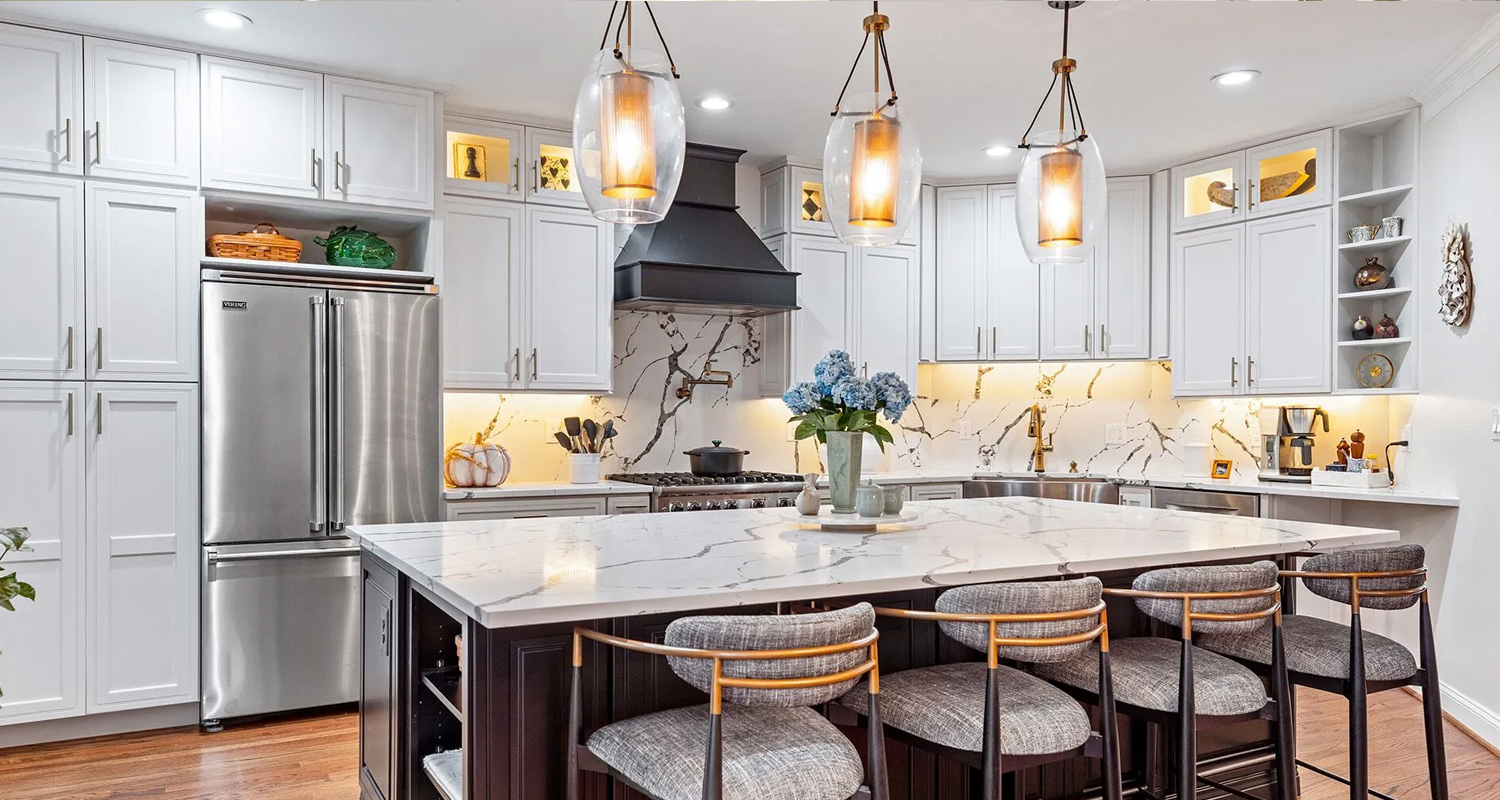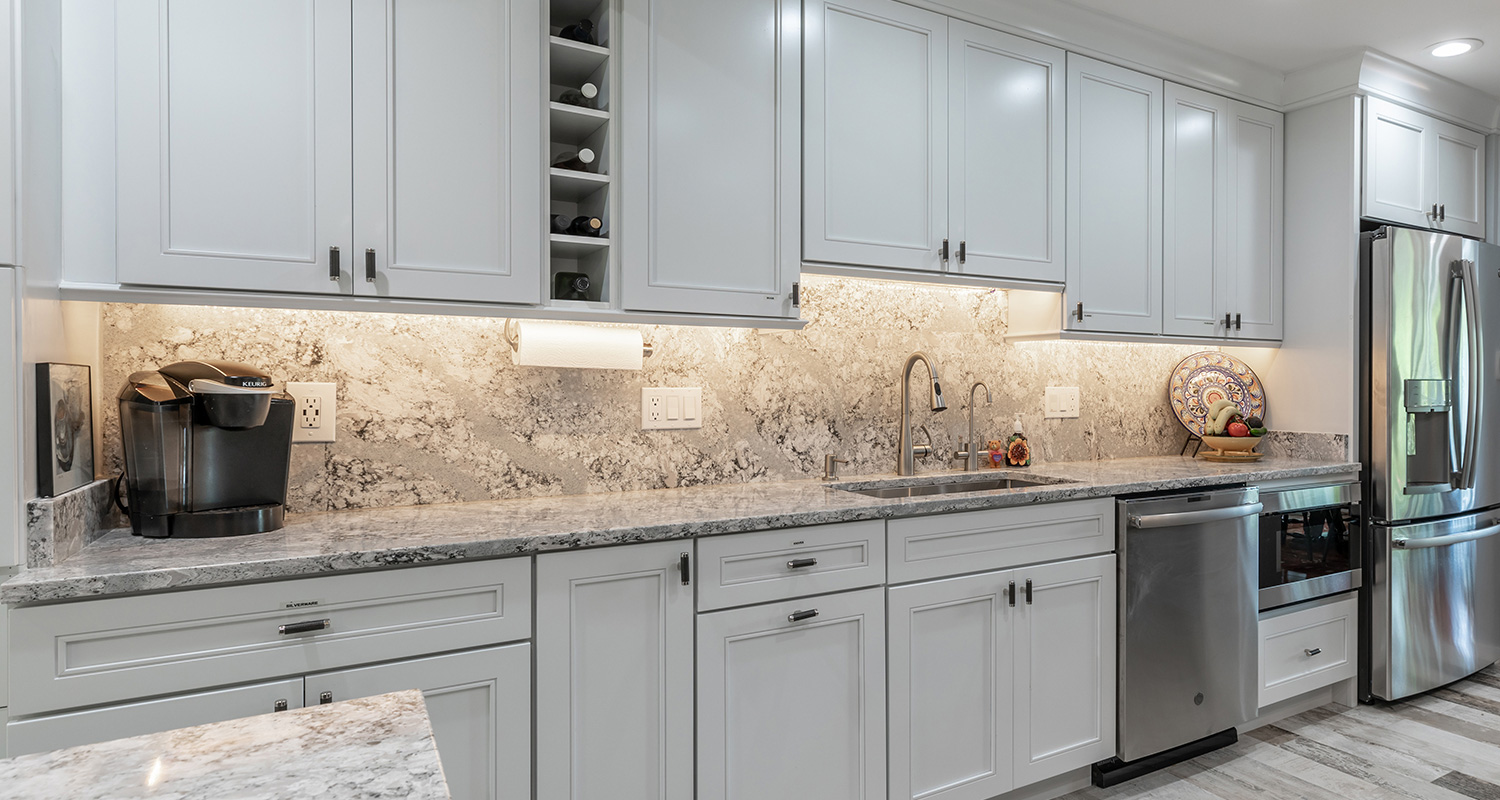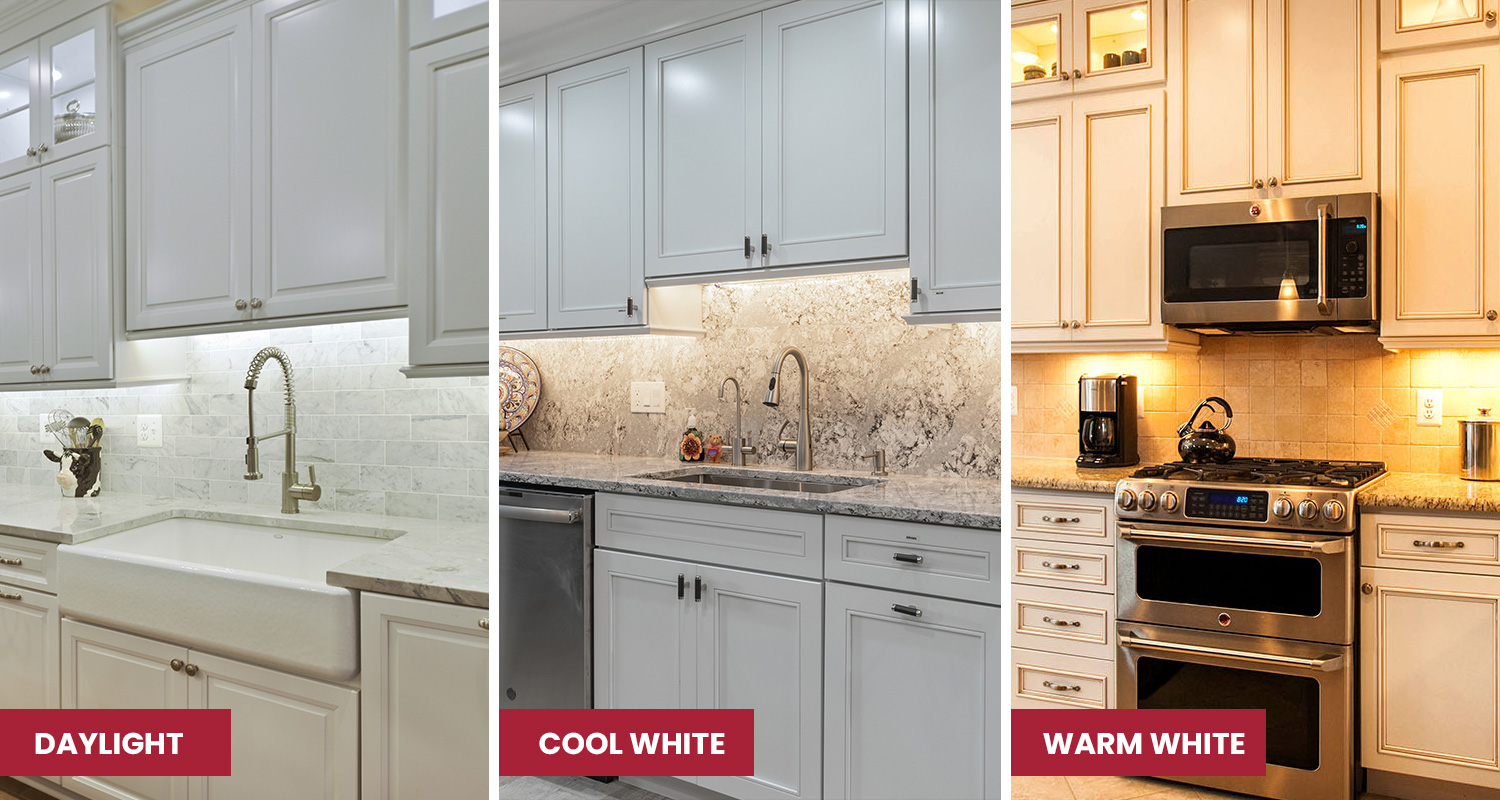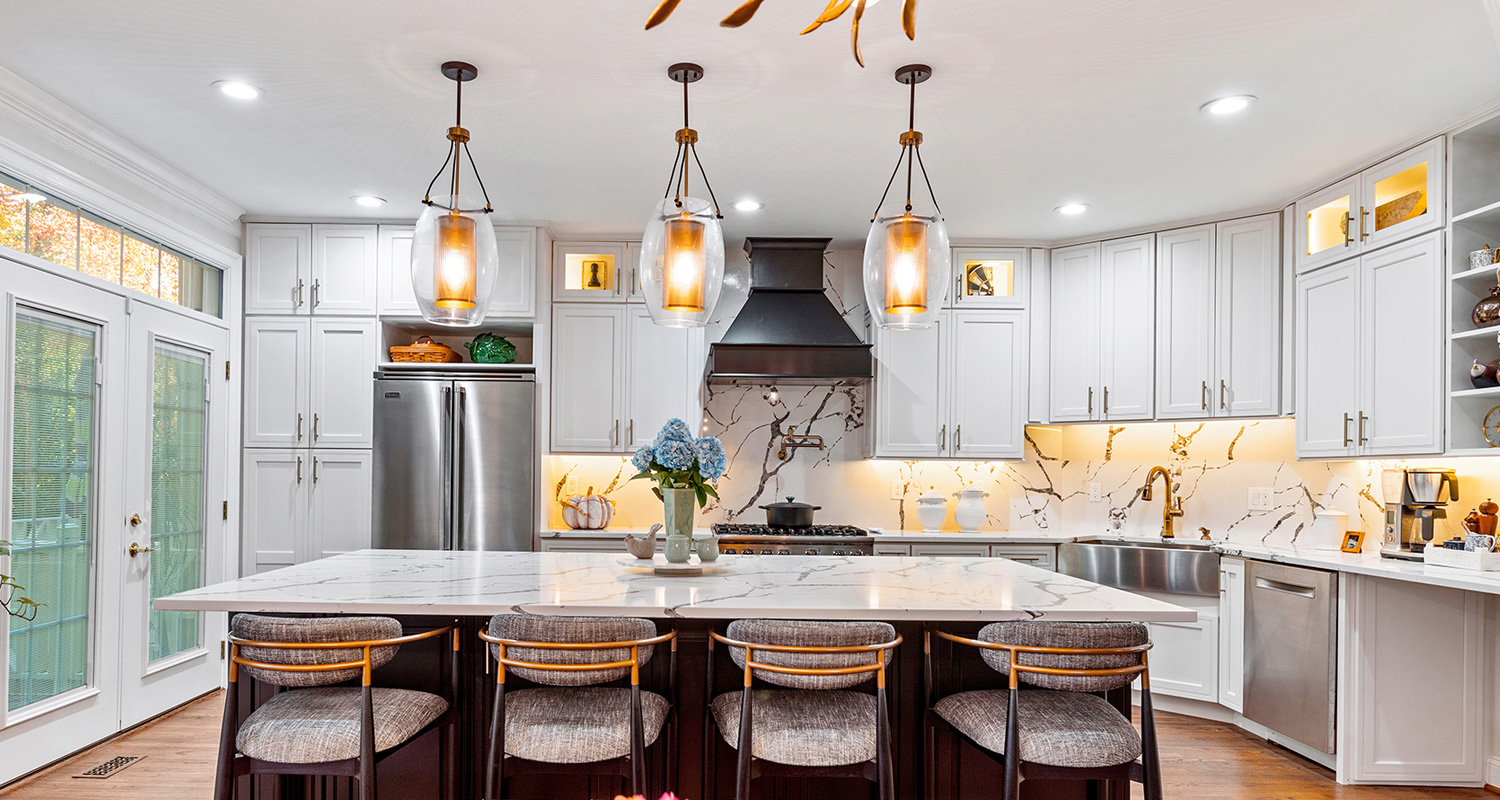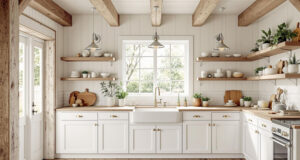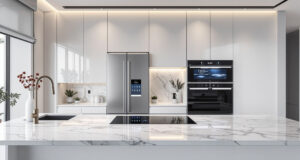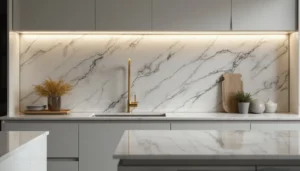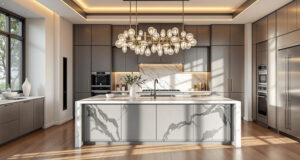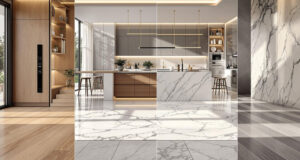The Importance of Kitchen Lighting
Lighting is one of the most essential aspects of kitchen design, yet it’s often overlooked. Poor lighting can diminish the functionality and appeal of your kitchen, while well-planned lighting can completely transform it into a bright, welcoming, and efficient space. This is particularly important for homeowners in Fairfax, VA, where many modern homes are incorporating stylish and energy-efficient lighting solutions.
In this article, we’ll explore five common kitchen lighting mistakesyou should avoid to ensure your kitchen becomes the heart of your home. From neglecting task lighting to misplacing fixtures, these mistakes can be costly, frustrating, and diminish your kitchen’s value. With insights and actionable tips, you’ll be able to create a perfect lighting plan for your kitchen.
For homeowners in Fairfax, Michael Nash Design, Build & Homesspecializes in kitchen remodeling and lighting solutions tailored to local preferences and architectural styles. Contact us atMichael Nash Design, Build & Homesto bring your dream kitchen to life!
Why Kitchen Lighting Matters in a Modern Home
Kitchen lighting is more than just a functional element—it’s a design feature that impacts how you use and enjoy the space. In a modern home, proper lighting improves visibility for cooking, enhances aesthetics, and even influences your mood. Whether you’re preparing meals, hosting guests, or relaxing with family, lighting sets the tone for every activity in the kitchen.
Benefits of Proper Kitchen Lighting:
- Increased Functionality: Task lighting ensures safety and precision while cooking or chopping.
- Enhanced Aesthetics: Accent and ambient lighting can elevate the kitchen’s design.
- Energy Efficiency: Modern lighting solutions like LEDs reduce energy consumption and costs.
- Improved Mood and Comfort: Bright, warm lighting fosters a cozy and inviting atmosphere.
“Kitchen lighting isn’t just about brightness; it’s about creating a space that’s both functional and beautiful.”
In Fairfax, VA, trends lean toward contemporary designs with layered lighting systems that blend functionality and style. But even the most stunning kitchens can fall victim to common lighting mistakes.
The Top 5 Kitchen Lighting Mistakes to Avoid
Now let’s dive into the specific errors that many homeowners make when it comes to kitchen lighting—and how to fix them.
Mistake #1: Neglecting Task Lighting
Task lighting is crucial for work zones like countertops, stovetops, and sinks. Without it, these areas can become poorly lit, making food preparation both difficult and unsafe.
The Problem: Many homeowners rely solely on overhead lighting, which often casts shadows over critical workspaces. For instance, a single ceiling fixture may illuminate the room but fail to provide the focused light needed for chopping vegetables or washing dishes.
The Solution: Install under-cabinet lightingor LED strip lights to ensure focused illumination. This type of lighting eliminates shadows and brightens work surfaces. Choose LEDs for their energy efficiency and long lifespan.
Quick Tip:
- Opt for dimmable task lighting to adjust brightness based on the time of day.
- Use cool white bulbs (4000K-5000K) for task lighting as they provide clarity.
Mistake #2: Overlooking Layered Lighting
Layered lighting combines three types of lighting—ambient, task, and accent—to create a well-balanced and visually appealing kitchen. Many homeowners stick to a single light source, leaving their kitchens feeling flat and uninspired.
The Problem: A lack of layered lighting results in either overly bright or inadequately lit spaces. For example, a kitchen with only recessed ceiling lights may lack the warmth and depth that accent lighting offers.
The Solution: Create a balanced kitchen lighting designby incorporating:
- Ambient Lighting: Ceiling-mounted fixtures or recessed lights for overall illumination.
- Task Lighting: Focused lights for workspaces, as mentioned earlier.
- Accent Lighting: Pendant lights, chandeliers, or LED strips to highlight architectural features or decor.
Mistake #3: Choosing the Wrong Light Bulbs
The type of light bulbs you choose can make or break your kitchen lighting. Bulbs that are too dim, too bright, or the wrong color temperature can distort your kitchen’s appearance and impact its functionality. Many homeowners unknowingly choose bulbs without considering these factors, leading to poor lighting quality.
The Problem: Using the wrong type of light bulbs often results in:
- Inconsistent Lighting: Mixing warm and cool bulbs creates an uneven look.
- Harsh Glare: Bulbs that are too bright can cause discomfort, especially in smaller kitchens.
- Inefficient Energy Use: Older incandescent bulbs consume more energy and have shorter lifespans compared to LEDs.
- Incorrect Color Temperature: A color temperature mismatch can make kitchens feel either overly sterile or uncomfortably warm.
For example, a bright, cool light (5000K) might be perfect for task areas but unsuitable for ambient lighting, which benefits from a softer, warmer tone (2700K-3000K).
The Solution: To avoid this mistake, consider these tips when choosing light bulbs for your kitchen:
- Stick to LEDs:
- Energy-efficient and long-lasting, LED bulbs are ideal for kitchens.
- LEDs come in a variety of color temperatures and brightness levels to suit every lighting need.
- Choose the Right Color Temperature:
- Use warm white bulbs (2700K-3000K)for ambient and accent lighting to create a cozy atmosphere.
- Opt for cool white bulbs (4000K-5000K)for task lighting to ensure clear visibility.
- Match Brightness Levels:
- Consider lumens instead of wattage when selecting bulbs. For example:
- Ambient lighting: 5,000–10,000 lumens for the entire kitchen.
- Task lighting: 450 lumens per fixture for focused areas.
- Accent lighting: 250–450 lumens, depending on the effect desired.
- Consider lumens instead of wattage when selecting bulbs. For example:
- Check CRI (Color Rendering Index):
- Look for a CRI of 90+ to ensure colors in your kitchen (like cabinets and countertops) appear vibrant and true to life under the light.
Quick Comparison Table: Best Bulb Choices for Kitchen Lighting
| Type | Best For | Color Temperature | Lumens | Advantages |
| LED Bulbs | All lighting types | 2700K-5000K | 450-1500+ lumens | Energy-efficient, dimmable, long lifespan |
| Halogen Bulbs | Accent or task lighting | 3000K | 400-1000 lumens | Bright and focused, less energy-efficient |
| Compact Fluorescent | Ambient lighting | 2700K-4000K | 800-1200 lumens | Affordable, energy-saving |
| Smart Bulbs | All lighting types | Adjustable | Adjustable | Customizable via apps, energy-efficient |
Pro Tip: If you’re remodeling your kitchen in Fairfax, VA, visit local lighting suppliers to see how different bulbs look in real kitchen setups. You can also consult the experts at Michael Nash Design, Build & Homesto choose the perfect bulbs that align with your design goals and energy efficiency needs.
Mistake #4: Ignoring Dimmer Switches
One of the simplest yet most effective ways to improve your kitchen lighting is by installing dimmer switches. Unfortunately, many homeowners overlook this feature, resulting in static lighting that can’t adapt to different times of day or activities. Ignoring dimmers can limit your kitchen’s functionality and diminish its ambiance.
The Problem:
Without dimmer switches, your kitchen lighting is either all on or all off, offering little flexibility. This can create issues such as:
- Lack of Mood Control: Bright lighting during evening gatherings can feel harsh, while dim lighting during meal prep can hinder visibility.
- Higher Energy Usage: Lights operating at full brightness consume more energy, even when you don’t need that level of illumination.
- Reduced Lifespan of Bulbs: Constantly running lights at full capacity can wear out bulbs faster.
For example, imagine hosting a cozy dinner party. The harsh glare from overhead lights can detract from the intimate atmosphere, leaving you wishing for a softer glow.
The Solution:
Installing dimmer switches allows you to customize the brightness of your kitchen lighting based on your needs. Here’s how to incorporate them effectively:
- Choose Compatible Bulbs:
Not all bulbs are dimmable, so opt for dimmable LED bulbsor smart lighting systems for seamless adjustment. - Install Dimmers for Each Layer:
- Use separate dimmers for ambient, task, and accent lightingto control each layer independently.
- For example, dim the overhead lights during dinner while keeping task lights bright for cooking.
- Smart Dimmers for Convenience:
- Consider smart dimmer switches that can be controlled via apps or voice assistants, allowing for effortless adjustments.
- For instance, adjust the brightness of your lights with a simple voice command: “Set the kitchen lights to 50%.”
- Set Pre-Programmed Scenes:
- Many smart dimmer systems allow you to create lighting scenes like “Cooking Mode” (bright task lights) or “Evening Mode” (dimmed ambient lights).
Energy Savings Tip:
According to Energy.gov, dimming your lights by 50% can reduce energy consumption by 40%. In addition, dimming extends the lifespan of LED bulbs, saving you money in the long term.
Pro Tip:
In Fairfax, VA, incorporating dimmer switches into your kitchen lighting is a sought-after feature for home buyers. A well-lit and flexible kitchen can boost your home’s resale value. For expert advice on kitchen lighting, reach out toMichael Nash Design, Build & Homes.
Mistake #5: Poor Placement of Lighting Fixtures
Even with high-quality bulbs and layered lighting, improper placement of fixtures can ruin the functionality and appearance of your kitchen lighting. Poorly positioned lights often result in dark spots, shadows, and uneven illumination, making your kitchen less practical and visually unappealing.
The Problem:
Homeowners frequently make placement mistakes such as:
- Overhead Shadows: A single ceiling light directly above the kitchen island or workspace can cast unflattering and obstructive shadows.
- Poor Task Lighting Positioning: Installing task lighting too far from work zones can reduce its effectiveness, leaving areas dimly lit.
- Clustered Fixtures: Placing fixtures too close together creates an overly bright area while leaving the rest of the kitchen underlit.
- Neglecting Corners: Failing to illuminate corners or underutilized spaces can make the kitchen feel smaller and less inviting.
For example, recessed lighting installed in the center of the ceiling might leave countertops or the sink area poorly lit because the light is blocked by the user’s shadow.
The Solution:
Proper placement of fixtures ensures your kitchen is evenly lit and functional for all activities. Here’s how to optimize lighting placement:
- Strategic Recessed Lighting:
- Position recessed lights in a grid layout, ensuring even distribution across the kitchen.
- Avoid placing them directly over countertops or workspaces to prevent shadows. Instead, position them slightly in front of these areas.
- Overhead Task Lighting:
- Install pendant lights or track lights directly above kitchen islands or breakfast bars.
- Use adjustable fixtures to focus light exactly where it’s needed.
- Under-Cabinet Lighting Placement:
- Mount lights toward the front edge of cabinets for optimal coverage of countertops.
- This eliminates shadows caused by the cabinet’s overhang and brightens work areas effectively.
- Accent Lighting for Depth:
- Place LED strips above or below cabinets to highlight architectural features and create a layered effect.
- Add spotlights or wall sconces to brighten dark corners or highlight decorative elements.
- Spacing Guidelines:
- For recessed lighting, keep fixtures about 4–6 feet apart for even coverage.
- When hanging pendant lights, maintain about 30–36 inches between the countertop and the bottom of the fixture for optimal illumination and visual balance.
Visual Guide: Lighting Placement Tips
Here’s a quick reference table for common fixture placements:
| Fixture Type | Best Placement | Purpose |
| Recessed Lights | Slightly in front of workspaces | Even ambient lighting, reduced shadows |
| Pendant Lights | Above islands or breakfast bars | Task and accent lighting |
| Under-Cabinet Lights | Front edge of cabinets | Brighten countertops |
| LED Strips | Above/below cabinets or toe kicks | Decorative and functional lighting |
Pro Tip:
When remodeling your kitchen, create a lighting plan before installing fixtures. This allows you to visualize the space and ensure no areas are underlit or overlit. For professional lighting designs tailored to your home in Fairfax, VA, contactMichael Nash Design, Build & Homes.
Conclusion and Final Thoughts
Kitchen lighting is more than just a functional necessity—it’s a design element that enhances your kitchen’s beauty, usability, and atmosphere. Avoiding common kitchen lighting mistakes can make a significant difference in how your space looks and feels. By planning your lighting with care, you can create a kitchen that is both practical and inviting.
From skipping layered lighting to choosing the wrong bulbs, every decision about kitchen lighting has an impact. Here’s a quick recap of what we covered:
- Skipping Layered Lighting: Use ambient, task, and accent lighting to create a balanced and functional space.
- Overlooking Under-Cabinet Lighting: Illuminate your countertops with properly positioned LED strips for a sleek, modern look.
- Choosing the Wrong Light Bulbs: Match bulb types, brightness, and color temperature for energy efficiency and visual harmony.
- Ignoring Dimmer Switches: Add dimmers for flexibility and energy savings, allowing your kitchen to adapt to different occasions.
- Poor Placement of Lighting Fixtures: Strategically position lights to eliminate shadows and dark spots while enhancing visual appeal.
By addressing these mistakes, you can transform your kitchen into a brighter, more functional space that meets your daily needs and complements your home’s style.
Why Kitchen Lighting Matters in Fairfax, VA
If you’re a homeowner in Fairfax, VA, proper kitchen lighting is not only essential for everyday use but also for increasing your property’s value. A well-lit, thoughtfully designed kitchen is a major selling point that appeals to potential buyers.
At Michael Nash Design, Build & Homes, we specialize in creating customized kitchen lighting plans that bring out the best in your space. From energy-efficient LED installations to stunning accent lighting designs, our team ensures that your kitchen shines—literally and figuratively.
Get Started Today
Ready to elevate your kitchen lighting? ContactMichael Nash Design, Build & Homesto schedule a consultation. Visit us at 8630A Lee Highway, Fairfax, VA 22031, to see how our award-winning designs can bring your dream kitchen to life.
Final Pro Tip:
When planning a kitchen remodel, think of lighting as the “jewelry” of the space. Just as the right accessories enhance an outfit, the right lighting enhances your kitchen. Invest in high-quality fixtures, bulbs, and expert design to ensure your kitchen sparkles—day and night.

